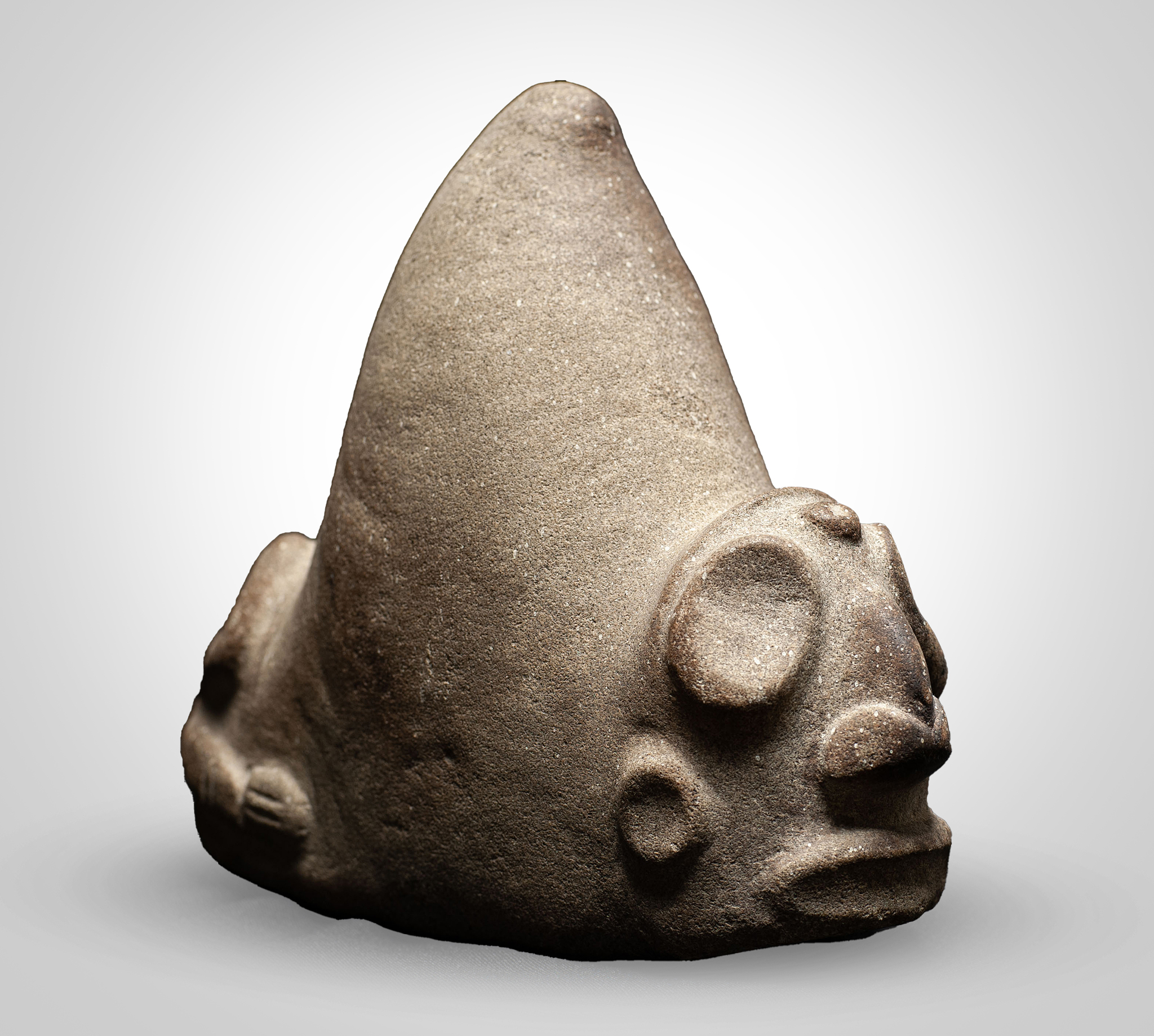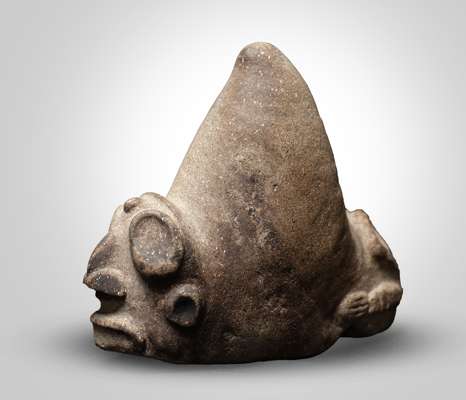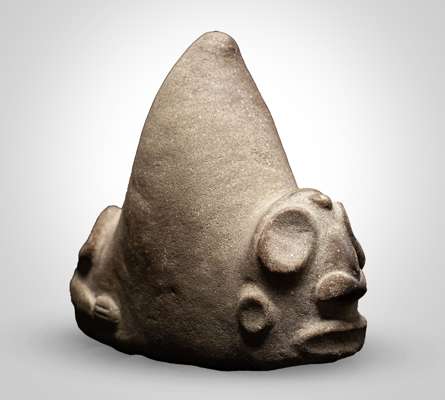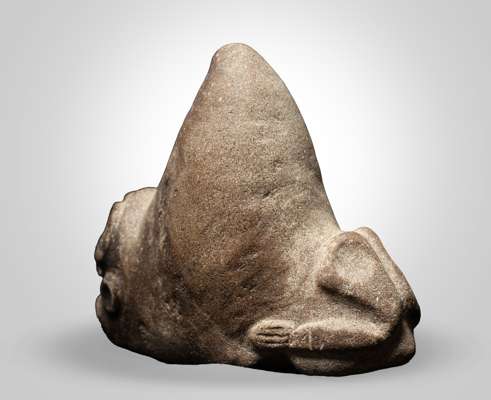
Lot 23

TAINO TRIGONOLITH
CARIBBEAN, 800 - 1500 A.D.








African & Oceanic Art, Natural History and Ancient Art
Auction: 30 July 2025 from 14:00 BST
Description
carved stone, a tall conical central body rising from a flat base, a stylised zemi face is positioned at the front, featuring wide ovoid eyes, a prominent nose with flared nostrils, thin parted lips, and a circular emblem on the forehead, the surface is smooth with rounded contours, on the reverse, a pair of retracted legs with defined toes are carved in low relief, old inventory number written in black ink on underside
Dimensions
19.7cm long
Provenance
Wilfred Belmar, Dominican Republic, acquired 1930s
R. Harrison collection, United States
Hart collection, Texas, USA, acquired by early 21st century
Exhibited:
Museum of Native American History, Bentonville, Arkansas, November 2016 – March 2019
Please note that this piece has been vetted by Dr. William F. Keegan, professor of Caribbean studies, and by Dr. John F. Scott, author of Art of the Taino from the Dominican Republic. It is accompanied by a short report penned by Dr. Scott.
Footnote
This stone sculpture, known as a trigonolith or three-pointed stone, is a significant artifact from the Taíno peoples of the Caribbean. These portable sculptures were closely associated with the cultivation of yucca or cassava, a key food crop, and were described by early Spanish chroniclers as holding ceremonial and agricultural importance. Trigonoliths vary in size and imagery, ranging from abstract to anthropomorphic or zoomorphic, and are most commonly found in the Greater Antilles, though examples extend as far as The Grenadines.
This example features the classic trigonolith form: a concave base, forward-leaning pointed peak, and an expressive face on one side. The back shows flexed limbs in a crouching posture, often likened to frog legs. Dr. John F. Scott interprets the turgid point on the present example as a symbolic reference to the manioc tuber, reinforcing the sculpture’s link to agriculture. These stones were typically placed in gardens to ensure successful crops and may represent the zemi (spirit), of the manioc.
This particular sculpture was part of the Wilfred Belmar and R. Harrison collections and was publicly displayed at the Museum of Native American History (2016–2019). It has been vetted by Dr. William F. Keegan, professor of Caribbean studies, and by Dr. John F. Scott, who based his assessment on decades of research into Taino art and culture. It is accompanied by a short report penned by Dr. Scott.







